Houseplants are like the quiet roommates you never knew you needed. They bring life, charm,
and a refreshing touch of nature right into your living room, kitchen, or even bathroom. But more
than just pretty greenery, these beauties can improve air quality, reduce stress, and boost your
mood.
So, you’re beginning and considering, or you’re thinking of adding to your collection of
houseplants. You want a plant that is relatively easy to grow, or one you can learn to grow with
(depending on how challenging you want the care of your plant to be). Let’s face it, life has its
challenges, who wants to be ruled by the quirks of a houseplant? You’ll be surprised!
Oh, and one often-overlooked benefit of diving into the houseplant world? Is learning their
botanical names. Not only does it make you sound like a plant pro, but it also helps you choose
the right plant care strategies. You don’t need a green thumb or a botanical degree to bring
nature indoors.
Whether you’re in a tiny apartment or a spacious house, these popular houseplants are easy to
love and even easier to care for. So let’s dig into the leafy details of six all-time favorite
houseplants.
Pothos (Epipremnum aureum)
Overview and Appearance – Pothos is the ultimate beginner’s plant. With its heart-shaped,
glossy green leaves that can be variegated with white or yellow, it adds a lush, trailing vibe to
any space. This photo is of a Golden Pothos (Pothos Variegated) – Epipremnum aureum
Growing Conditions – Pothos thrives in low to medium light
and tolerates a bit of neglect. Just let the soil dry out between
waterings, and you’re golden.
Why Pothos Is a Favorite – This plant grows like a champ
and can even be propagated in a jar of water. It’s practically
foolproof and adds a vibrant, jungle-like charm to bookshelves
or hanging baskets.
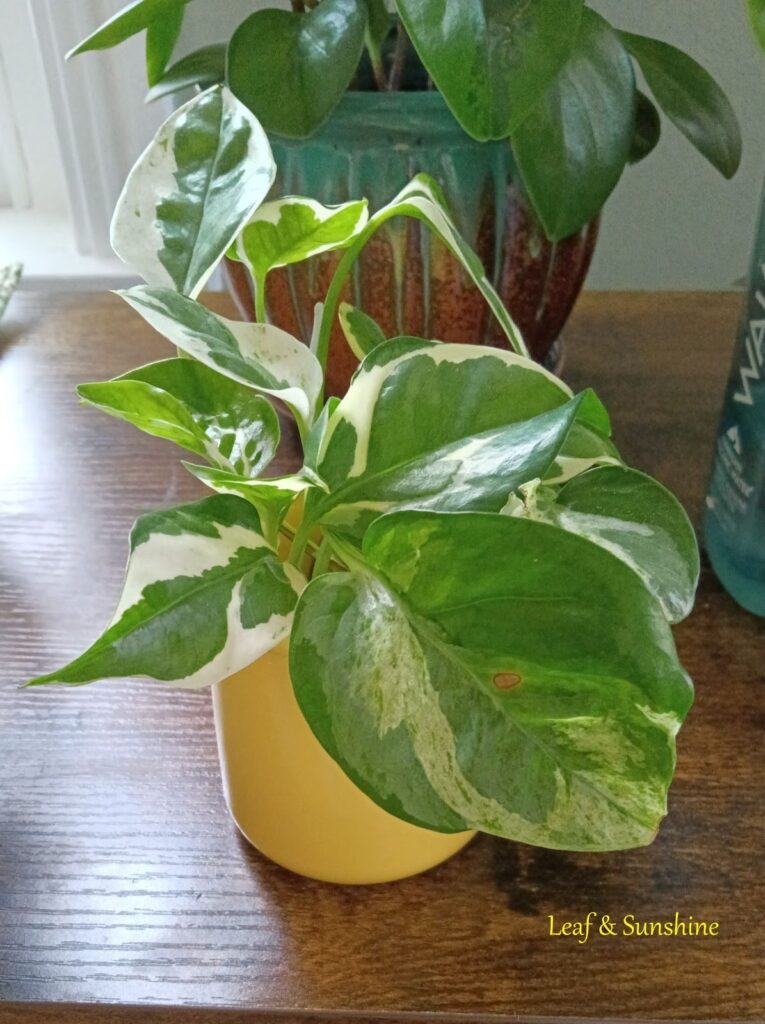
Jade Plant (Crassula ovata)
Overview and Appearance – The jade plant is a fleshy, tree-like succulent with oval-shaped
leaves that feel almost rubbery. It can live for decades and grow into a small bonsai-like
Growing Conditions – It prefers bright, indirect light and only
needs watering when the soil is dry.
Symbolism and Benefits – Often called the “money plant,”
jade symbolizes prosperity and good luck in many cultures. It’s
a fantastic desk plant—who doesn’t want a little extra luck at
work?

Snake Plant (Sansevieria trifasciata ‘Dracaena’)
Overview and Appearance – The snake plant (also known as Mother-in-law’s tongue) stands
tall with its stiff, sword-like leaves, and typically green with yellow edges, or mottled with gray.
Growing Conditions – It’s the poster child for low-
maintenance. Low light? Fine. Missed watering? Also fine. It’s
nearly indestructible.
Air-Purifying Properties – According to NASA, the snake
plant is one of the top indoor plants for air purification. It
absorbs toxins like formaldehyde and benzene. Stylish and
functional? Yes, please.
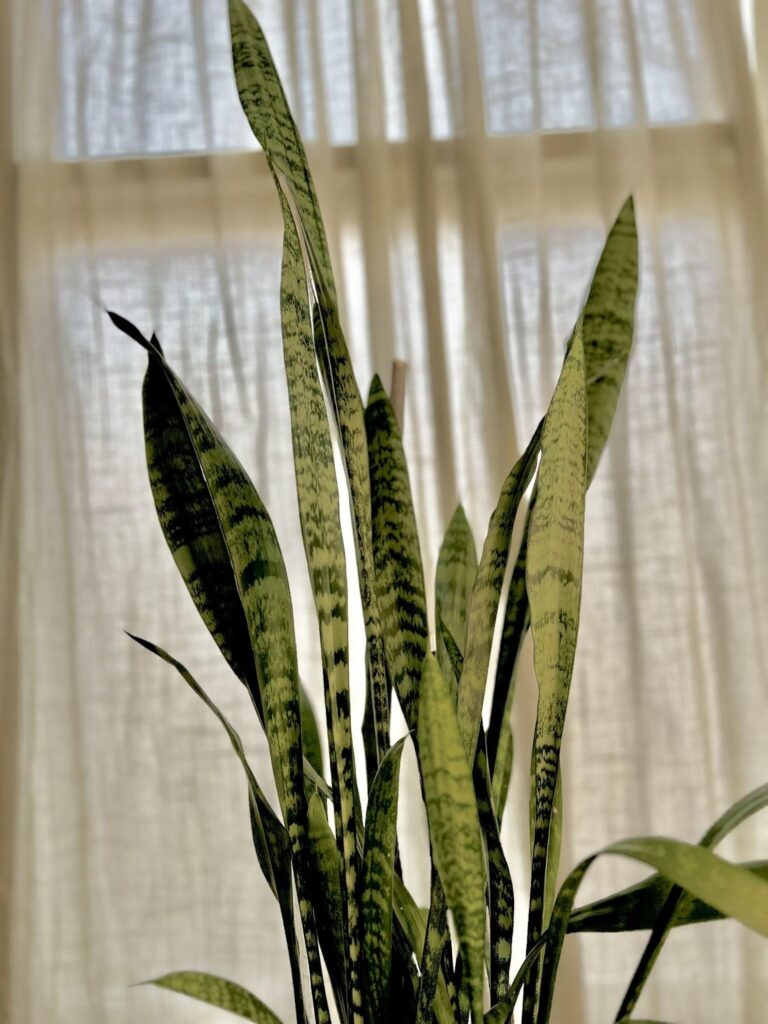
ZZ Plant (Zamioculcas zamiifolia)
Overview and Appearance – The ZZ plant has waxy, dark green leaves that reflect light and
instantly brighten any corner. It’s like the introvert of the plant world—low-key, but stunning.
Growing Conditions – It loves neglect. Give it low to medium
light, and water it only when the soil feels bone dry.
Low-Maintenance Magic – If you tend to forget your plants
exist, the ZZ is your ride-or-die. It’s drought-resistant, pest-
resistant, and thrives on being ignored.
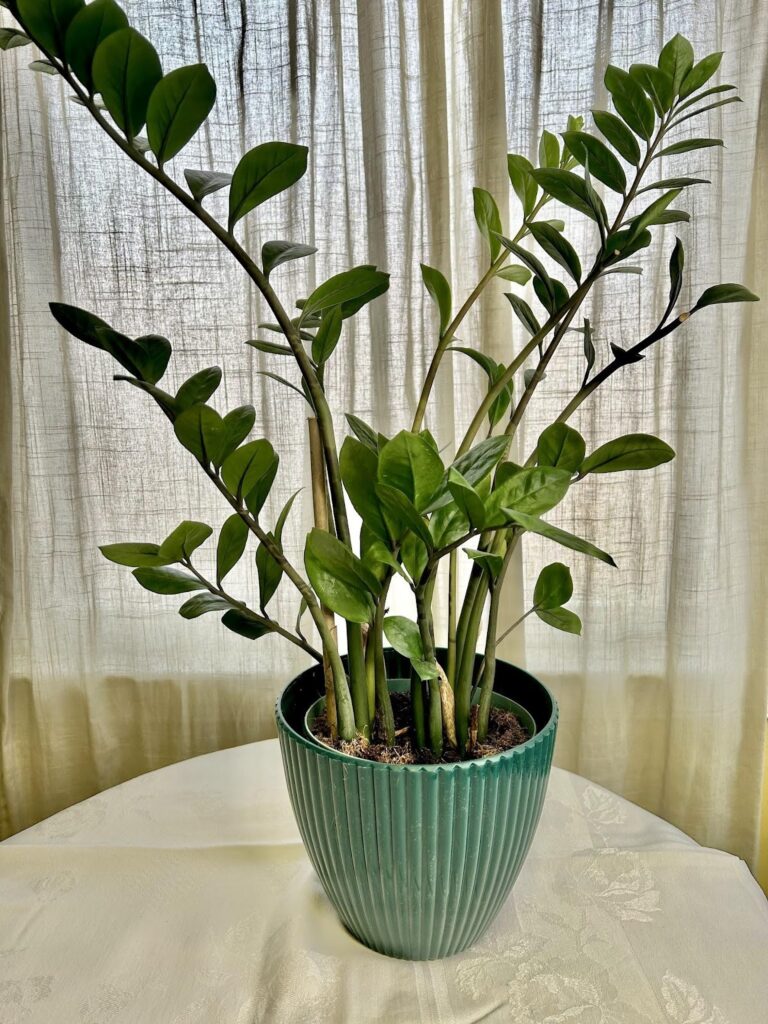
Spider Plant (Chlorophytum comosum)
Overview and Appearance – The spider plant features slender, arching leaves—usually green
with white stripes—and produces baby “spiderettes” that dangle like ornaments.
Growing Conditions – Bright, indirect light is best. Let the soil
dry a bit between waterings.
Kid- and Pet-Friendly Option – Safe for pets and visually
entertaining with its baby offshoots, the spider plant is a family
favorite.

Peace Lily (Spathiphyllum spp.)
Overview and Appearance – The peace lily showcases dark green foliage with elegant white
blooms that resemble calla lilies. It’s one of the few indoor plants that flowers.
Growing Conditions – Prefers low to medium light and
consistently moist soil. Don’t let it dry out too much.
Blooming Beauty Indoors – Its white blooms symbolize peace
and tranquility. Perfect for bedrooms or serene corners of your
home.
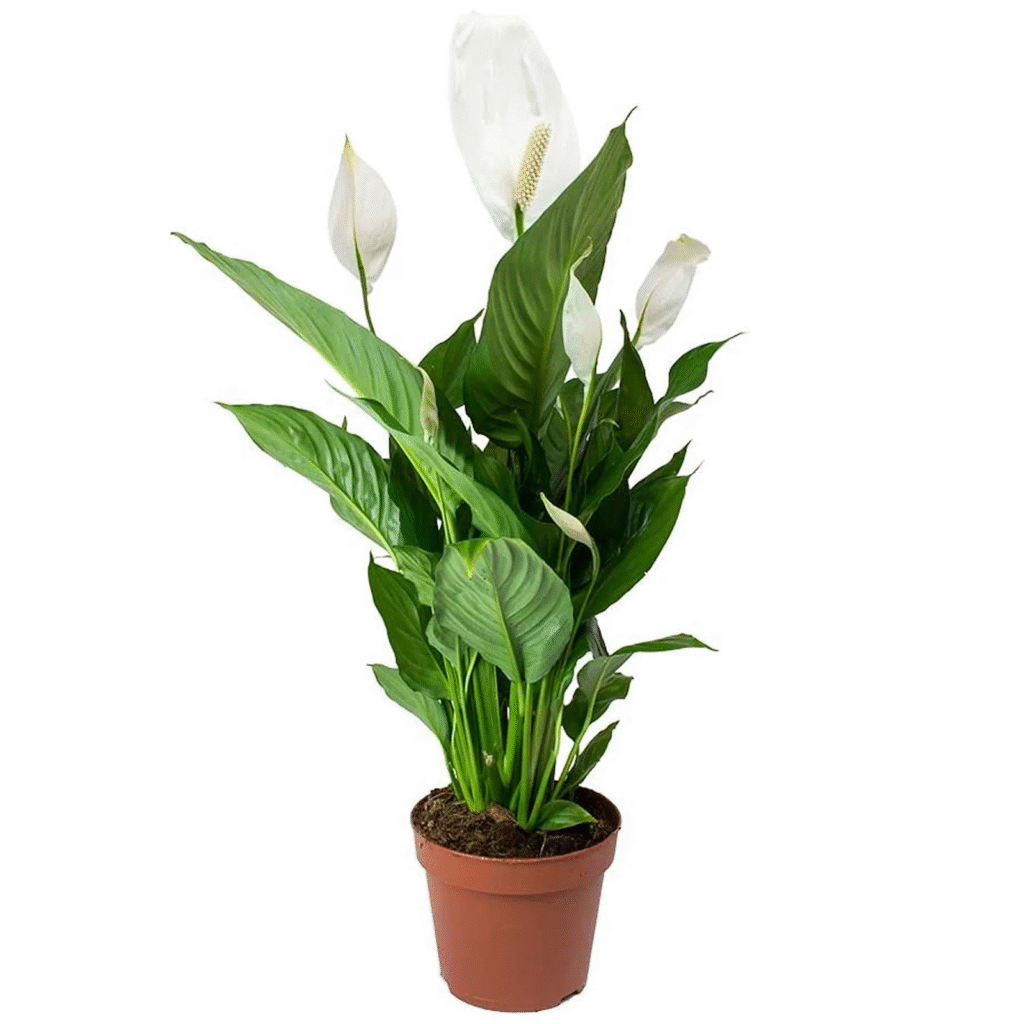
Other Easy Care Plants to Consider
Watermelon Peperomia (Peperomia argyeia) This is a lovely compact plant with glossy green leaves which resemble a watermelon. It is a native to northern South America, including Bolivia, Brazil, Ecuador, and Venezuela. Its flowers look like alien protrusions and grace you with their presence in summer.
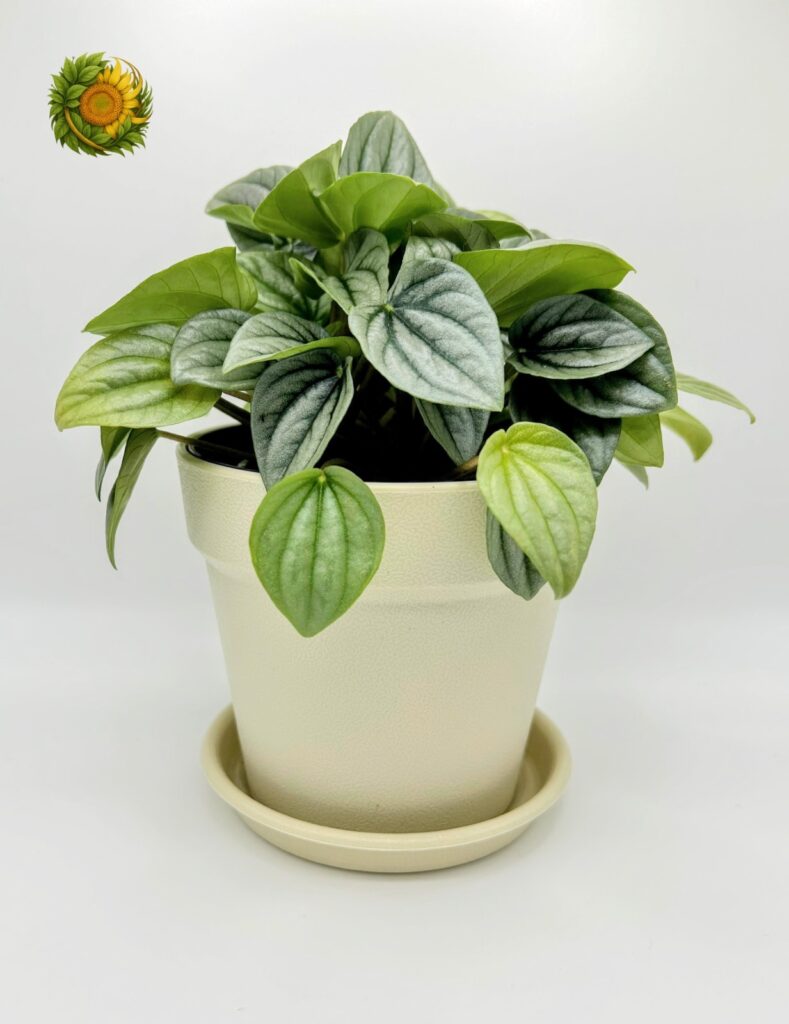
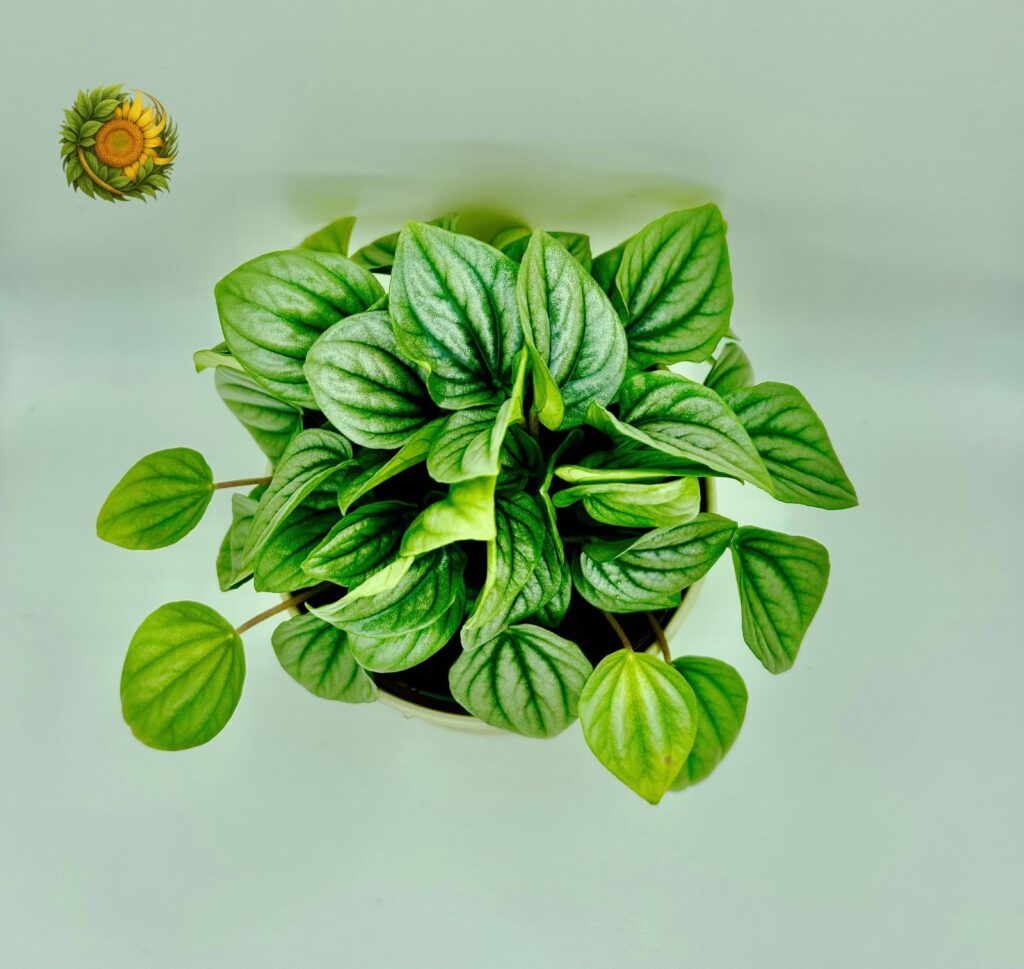
Another Peperomia I love is the Peperomia Thailand Jade (Peperomia obtusifolia ‘Thailand’) also known as the Baby Rubber Plant. This is the green one, but there is a variegated cultivar, Peperomia obtusifolia ‘Variegatta’, (Variegated Peperomia/Variegated Baby Rubber Plant). It’s an easy to care for plant, especially for those who may be a little forgetful when it comes to watering. It likes a dry condition, so a little neglect is okay with this one. But, to keep the plant happy and to maintain the glossy thick leaves and fleshy stems, water thoroughly when the top ¼ to 1 inch is dry and drain well. I like to support my plant, but you can let the leaves fall as they grow. An easy plant to propagate to encourage a more compact look. This one is ready for a trim, but I wanted to show options.
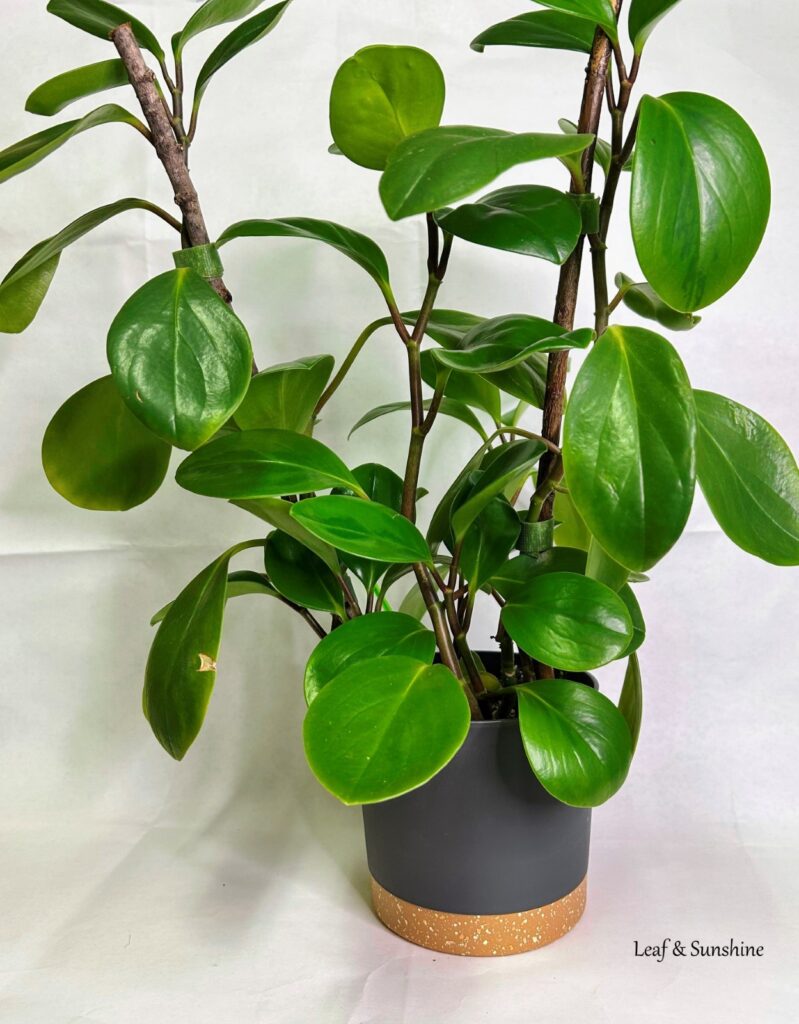
Moonshine Snake Plant
(Sansevieria trifasciata ‘Moonshine’) Is perfect for novice and seasoned
plant lovers

Purple Passion Plant
(Gynura aurantiaca) is a unique, bold statement plant native to Southeast
Asia. The dark green serrated leaves are covered in thick violet hair.

Red Chinese Evergreen/Red Siam variety
(Aglaonema ‘Siam Aurora’) A popular plant because
of its vibrant foliage of dark green leaves and bright red or pink borders with splashes of red,
pink, and green.

Zebra Plant
(Aphelandra squarrosa) This compact shrub grows as tall as 6’ in its native tropical
habitat in Brazil. Another perfect plant for novice and seasoned plant lovers.

Quick Tips for Houseplant Care
Light Requirements – Not all plants want a sunny spot. Learn who prefers a shady nook and
who’s a sun worshipper.
Watering Wisely – Overwatering is a common plant killer. Most houseplants like their soil to dry
out a bit before the next soak.
Potting and Soil – Use well-draining soil and pots with drainage holes. Trust us—no plant
wants wet feet.
| Favorite Plants | Preferred pH | Drainage Needs | Moisture Preference |
|---|---|---|---|
| Fiddle Leaf Fig | 6.0–7.0 | Well-draining, loamy | Moderate moisture, allow top inch to dry |
| Jade Plant | 6.0–7.0 | Excellent drainage, gritty | Low, dry between waterings |
| Pothos | 6.1–6.5 | Moderate drainage | Moderate, let top inch dry |
| Spider Plant | 6.0–7.2 | Good drainage | Moderate |
| Monstera Deliciosa | 5.5–7.0 | Well-draining | Moderate to high |
| Rubber Plant | 5.5–7.0 | Well-draining | Moderate |
| ZZ Plant | 6.0–7.0 | Well-draining | Low, drought tolerant |
| Snake Plant | 5.5–7.5 | Excellent drainage | Low, dry between waterings |
| Peace Lily | 5.8–6.5 | Moderate to high | High, keep soil moist |
| Tradescantia Zebrina | 5.0–6.0 | Good drainage | Moderate |
| Philodendron | 5.0–6.0 | Moderate to high | Moderate |
| Calathea | 6.5 | Moderate | High, consistent moisture |
| Aloe Vera | 7.0–8.5 | Excellent drainage | Low, dry between waterings |
| Bird’s Nest Fern | 5.0–6.5 | Moist but well-drained | High humidity, moist soil |
Add one or add them all—just know that your space will instantly feel more alive, more peaceful,
and you’ll feel at ease learning to care for these “starter” plants!
FAQs
- What’s the best houseplant for beginners?
Pothos is hands-down the best starter plant. It’s forgiving, fast-growing, and thrives in low light. - Can houseplants improve air quality?
Yes! Plants like snake plant, spider plant, and peace lily help filter indoor air pollutants. - How often should I water my plants?
It depends on the plant. A good rule of thumb is to water when the top inch of soil is dry. - Are these houseplants safe for pets?
Spider plants are safe, but others like peace lilies and pothos can be toxic if ingested. - What if my plant’s leaves are turning yellow?
Yellow leaves can signal overwatering, poor drainage, or not enough light. Adjust care
accordingly.
